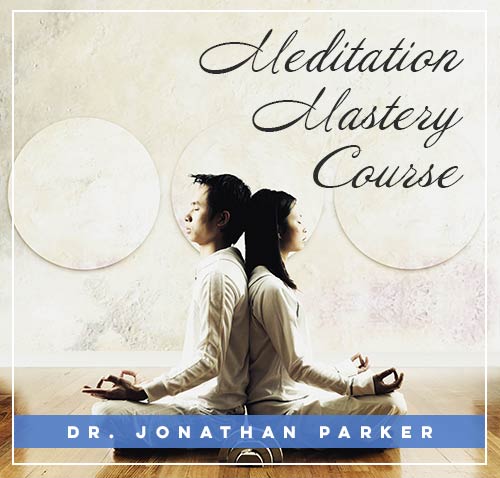Incorporating Mindfulness Into Your Routine

Looking for more amazing products? Check out our online store and explore our collection here! Happy shopping!
Before diving in, please note: This post is for informational purposes only. If you’d like to know more about how we approach topics, feel free to check out our friendly Disclaimer Page.
Hey there, amazing readers! 
We’re committed to delivering quality posts, and your support (even just sticking around despite the ads) means everything to us. So, bear with us, and thanks for helping us keep the good vibes rolling. Now, on to the fun stuff!
TRANSLATE BUTTON AT THE END OF THE ARTICLE
What is Mindfulness?
Mindfulness is the practice of being fully present and engaged in the moment, without judgment or distraction.
It involves paying attention to your thoughts, feelings, bodily sensations, and the surrounding environment with a sense of openness and curiosity.
By cultivating mindfulness, individuals can become more aware of their thoughts and emotions, leading to a greater sense of clarity, focus, and inner peace.
Benefits of Mindfulness
Incorporating mindfulness into your routine can have a multitude of benefits for both your mental and physical well-being.
Some of the advantages of practicing mindfulness include:
Reduced stress and anxiety levels
Improved concentration and memory
Enhanced self-awareness and emotional regulation
Increased resilience to life’s challenges
Better sleep quality
Strengthened relationships through improved communication
Boosted immune system function
Decreased symptoms of depression
Greater overall sense of happiness and well-being
By integrating mindfulness into your daily life, you can experience these benefits firsthand and lead a more fulfilling existence.
How to Start Practicing Mindfulness
If you’re new to mindfulness, getting started may seem overwhelming at first.
However, incorporating mindfulness into your routine doesn’t have to be complicated.
Here are some simple steps to begin practicing mindfulness:
Set aside a few minutes each day for mindfulness exercises
Find a quiet and comfortable space where you won’t be disturbed
Focus on your breath and bring your attention to the present moment
Notice any thoughts or sensations that arise without judgment
Practice self-compassion and kindness towards yourself
Gradually increase the duration of your mindfulness sessions as you become more comfortable
Experiment with different mindfulness techniques to find what works best for you
By taking these initial steps, you can lay the foundation for a regular mindfulness practice that will benefit your overall well-being.
Mindful Breathing Techniques
One of the most fundamental aspects of mindfulness is mindful breathing.
By focusing on your breath, you can anchor yourself in the present moment and cultivate a sense of calm and relaxation.
Here are some simple mindful breathing techniques to try:
Deep Breathing: Inhale deeply through your nose, feeling your lungs expand, then exhale slowly through your mouth, releasing tension and stress.
Counting Breaths: Count each inhalation and exhalation up to a certain number, then start over.
This can help maintain focus and concentration.
Box Breathing: Inhale for a count of four, hold your breath for four counts, exhale for four counts, and then hold for four counts before repeating.
By practicing mindful breathing techniques regularly, you can train your mind to stay present and centered in any situation.
Incorporating Mindfulness into Daily Activities
Mindfulness isn’t just about sitting in meditation; it can be integrated into your daily activities as well.
Here are some ways to incorporate mindfulness into your routine:
Mindful Walking: Pay attention to each step you take, the sensations in your feet, and your surroundings as you walk.
Mindful Eating: Slow down and savor each bite of your meal, noticing the flavors, textures, and smells.
Mindful Listening: Truly listen to others without interrupting or formulating a response in your mind.
Mindful Driving: Focus on the road, your hands on the wheel, and your surroundings while driving.
By bringing mindfulness into everyday tasks, you can infuse your life with greater awareness and presence.
Mindful Eating Habits
Mindful eating is a practice that involves paying full attention to the experience of eating, without distractions.
By savoring each bite and being mindful of hunger and fullness cues, you can develop a healthier relationship with food.
Here are some tips for practicing mindful eating:
Eat slowly: Take your time to chew each bite thoroughly and notice the flavors and textures of your food.
Eliminate distractions: Turn off the TV, put away your phone, and focus solely on your meal.
Listen to your body: Pay attention to hunger and fullness cues, eating when you’re hungry and stopping when you’re satisfied.
Express gratitude: Acknowledge the effort that went into preparing your meal and be grateful for the nourishment it provides.
By adopting mindful eating habits, you can enjoy your food more fully and make healthier choices.
Mindfulness Meditation Tips
Meditation is a powerful tool for cultivating mindfulness and can be practiced in various forms.
Here are some tips for getting the most out of your mindfulness meditation practice:
Start small: Begin with short meditation sessions, gradually increasing the length as you build your practice.
Focus on the breath: Use your breath as an anchor for your attention, returning to it whenever your mind wanders.
Practice self-compassion: Be gentle with yourself if you find your mind wandering; it’s a natural part of the process.
Set a regular schedule: Establish a consistent meditation routine to make it a habit and reap the benefits over time.
By following these tips and staying consistent with your meditation practice, you can deepen your mindfulness and experience its transformative effects.
Mindfulness Apps and Resources
In today’s digital age, there are countless apps and resources available to support your mindfulness practice.
Some popular mindfulness apps include Headspace, Calm, Insight Timer, and Stop, Breathe & Think.
These apps offer guided meditations, breathing exercises, and mindfulness techniques to help you stay on track with your practice.
Additionally, there are a plethora of books, podcasts, and online courses dedicated to mindfulness and its benefits.
By exploring these resources, you can find the support and guidance you need to incorporate mindfulness into your daily routine effectively.
Mindful Movement and Exercise
Mindful movement practices, such as yoga, tai chi, and qigong, can be excellent ways to incorporate mindfulness into your physical activity routine.
By focusing on the sensations in your body, your breath, and the present moment during movement, you can deepen your mind-body connection and enhance your overall well-being.
Whether you’re practicing gentle stretches, flowing yoga sequences, or mindful walking, incorporating mindfulness into your movement can help reduce stress, increase flexibility, and improve your overall physical health.
Practicing Gratitude Mindfully
Gratitude is an essential component of mindfulness and can be practiced in a mindful way to enhance its benefits.
By cultivating a sense of gratitude for the present moment, the people in your life, and the simple pleasures around you, you can shift your perspective and experience greater joy and contentment.
Some ways to practice gratitude mindfully include keeping a gratitude journal, expressing thanks to others, and taking moments throughout the day to appreciate the beauty and abundance in your life.
By integrating gratitude into your mindfulness practice, you can foster a more positive outlook and deepen your sense of well-being.
Overcoming Common Mindfulness Challenges
While mindfulness can offer numerous benefits, it’s not always easy to maintain a consistent practice.
Common challenges that may arise when incorporating mindfulness into your routine include:
Restlessness: Feeling fidgety or distracted during meditation sessions.
Resistance: Avoiding mindfulness practices due to discomfort or unfamiliarity.
Impatience: Wanting immediate results and becoming frustrated with the process.
Overwhelm: Feeling like there’s too much to focus on and not knowing where to start.
To overcome these challenges, it’s essential to approach mindfulness with patience, self-compassion, and a sense of curiosity.
By acknowledging these obstacles and working through them with persistence, you can establish a sustainable mindfulness practice that enriches your life.
Making Mindfulness a Habit
Incorporating mindfulness into your routine is not a one-time task; it requires consistency and dedication to become a habit.
Here are some strategies for making mindfulness a regular part of your daily life:
Set reminders: Use alarms, sticky notes, or calendar alerts to prompt you to practice mindfulness regularly.
Create a routine: Establish a specific time and place for your mindfulness practice to make it a habit.
Start small: Begin with short sessions and gradually increase the duration as you become more comfortable.
Celebrate progress: Acknowledge your efforts and successes in maintaining a mindfulness practice to stay motivated.
By implementing these strategies and staying committed to your mindfulness practice, you can make it a natural part of your daily routine and experience the profound benefits it has to offer.
Conclusion
Incorporating mindfulness into your routine can have transformative effects on your overall well-being, from reducing stress and anxiety to improving concentration and resilience.
By practicing mindfulness through breathing techniques, daily activities, meditation, and gratitude, you can cultivate a greater sense of presence, awareness, and inner peace in your life.
With the abundance of mindfulness apps, resources, and movement practices available, you have the tools and support needed to make mindfulness a sustainable habit.
By overcoming common challenges and staying consistent with your practice, you can unlock the full potential of mindfulness and lead a more mindful, fulfilling life.
Start your mindfulness journey today and experience the profound benefits it has to offer.

The Enlightenment Journey is a remarkable collection of writings authored by a distinguished group of experts in the fields of spirituality, new age, and esoteric knowledge.
This anthology features a diverse assembly of well-experienced authors who bring their profound insights and credible perspectives to the forefront.
Each contributor possesses a wealth of knowledge and wisdom, making them authorities in their respective domains.
Together, they offer readers a transformative journey into the realms of spiritual growth, self-discovery, and esoteric enlightenment.
The Enlightenment Journey is a testament to the collective expertise of these luminaries, providing readers with a rich tapestry of ideas and information to illuminate their spiritual path.
Our Diverse Expertise
While our primary focus is on spirituality and esotericism, we are equally passionate about exploring a wide range of other topics and niches 

To ensure we provide the most accurate and valuable insights, we collaborate with trusted experts in their respective domains 
Our blog originally focused on spirituality and metaphysics, but we’ve since expanded to cover a wide range of niches. Don’t worry—we continue to publish a lot of articles on spirituality! Frequently visit our blog to explore our diverse content and stay tuned for more insightful reads.
Hey there, amazing reader! 
Check out our store here and take a peek at some of our featured products below! Thanks for being awesome!












